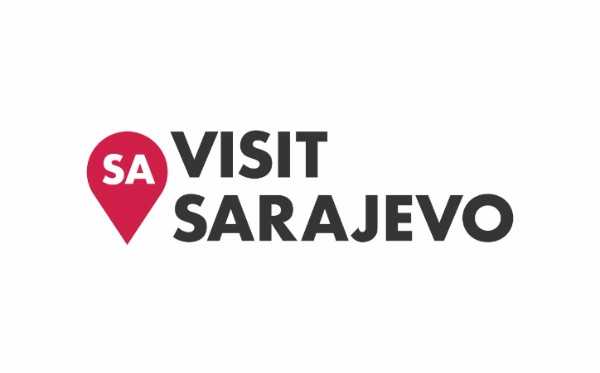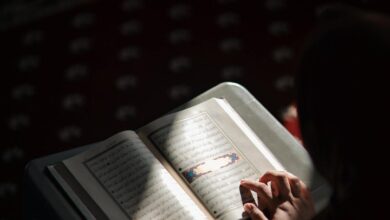Islamic architecture and art in Sarajevo: Orient on European soil
Urban development of Sarajevo city is easily followed and recognized from the Yellow Fortress, or the Old City (White Fortress).
Gradually, from the White Fortress, over Vratnik, then Baščaršija, Skenderija, Marijin Dvor, Malta, Čengić Vila all the way to Alipašino polje significant footprints and legacies of all those states previously building and expanding Sarajevo are seen. Unfortunately, some of them ruined because of their universalistic approach that ‘’the history starts with them.’’
There are very few cities in the world having such plethora of architectural styles on relatively small space – clash of East and West ways of life. As the matter of fact, a walk from Sebilj, through Sarači and Ferhadija, to Titova Street is simply a time travel, a travel through centuries of the urban development of Sarajevo.
The first time cities started their ‘’out of the fortress’s walls’’ development was in the 15th century, with the arrival of the Ottomans. In fact, Isa – beg Ishaković was the first one who built objects on the soil of today’s Baščaršija. Later on, Gazi Husrev-beg finalized this predecessor’s work with more objects, today’s cornerstones of contemporary Sarajevo.

While oriental architecture is closer to a human and his needs, the Western one is often a symbol of show off and domination. It is best way represented through examples of the City Hall and the Cathedral. This architectural accomplishment, on the other hand, represents a mixture of European and pseudo-Moorish style from Spain. This overall style was the legacy of 40 years rule of Austro-Hungarian Empire. The goal of Austro-Hungarians was to get closer with the locals who were Muslims by introducing the architectural elements from the Arab golden era in Spain.
Dr. Behija Zlatar in the book ‘’The golden era of Sarajevo (XVI century)’’ (Svjetlost, Sarajevo, 1996) says that Sarajevo in that time did not have so many monumental objects, considering the principle ‘’everything for a man,’’ but that for sure does not mean that there were no significant architectural accomplishments. Almost all relevant, Islamic objects are built on the territory of ‘’čaršija.’’ From small stores all the way to mosques’ enormous minarets there is a perfect gradational balance. Those small stores are at the same time the most numerous objects in čaršija. Starting with them, moving on to houses, hans and karavansarays, we have mosques, bezistans, hamams, madrasas and, as the highest architectural level, tall minarets and clock-towers with Lombardy poplans planted next to time, as some sort of a rule. All this is perfectly integrated in the nature and in the living zones, those attached to čaršija, but also slightly above the the city’s core level – on the nearby hills.
The most monumental mosque in Sarajevo is built is 1531 by the famous Bosnian sandzakbeg, Gazi Husrev-beg, whose endowments gave special stamp to Sarajevo. He was born in Serez around 1480, from mother Seldžuka, Bajazid’s daughter, and from father Ferhad-beg, from Hercegovina. He started with his education very early and made a huge progress in the service in the short period of time.
https://youtu.be/sSBPykeC3c0
Many argue that Gazi Husrev beg’s mosque, with its bold and constructive architectural solutions, rich decoration and huge minaret would be a remarkable legacy, even if it was made in Istanbul.
Hundreds of shops and craft shops in Baščaršija were parts of waqf, organized in esnafs on the streets.
First crafts are mentioned in the oldest known cadastre from 1489. We can see in this index that the earliest crafts were there for the purpose of the army – blacksmiths, saber-makers, boot-makers, butchers, bakers, sarači, čebedžija, halači, etc. Thirty years later the crafts number doubled. In the inventory from 1528 to 1536 there are nineteen professions mentioned. Among them, nalbanti, nalčadžija, bravari, dunđteri, kujundžija, papudžija, and so on. In the beginning of the 17th century, we have first bell-ringers, beam-scales’ men, quilts’ makers, watchmakers, and so on. At the end of the 19th century, there were 70 different crafts and around 400 different products mentioned. The most numerous were the products of sarači, kazandžija, kazaz and kovači. Some crafts had artistic value and were popular and appreciated all around the Ottoman Empire. The examples are kazadžija, ćurčija, kujundžija and sarači, sometimes even exported. Craft shops were divided by čaršija’s. Each craft or several related had their own street.
Besides those buildings survived and today representing the national monument from the Ottoman Empire, Sarajevo museums offer many entertainment to tourists and history enthusiasts. Museums of the Sarajevo City are settled in Bursa bezistan, Svrzina House, Despića House, Sarajevo Museum 1878-1918 on the Princip’s bridge, Hebrew Museum and Gazi Husrev beg’s Museum in Kuršumlija Madrasah, across his mosque.
Besides all these things, Sarajevo National Museum has a rich ethnographic setup, as well as Sarajevo Olympics Museum, waiting for the restoration. Thanks to turbulent history of Sarajevo and Bosnia and Herzegovina at the end of the 20th century, museum offer in Sarajevo is enriched by museums dedicated to genocide committed against Bosniaks, Srebrenica, war childhood in Sarajevo and Bosnia and Herzegovina’s first president – Alija Izetbegović.
https://youtu.be/g5XgLHdUmUM
Sarajevo’s restored cable car offers the best panoramic view.
#sarajevo_in_ramadan
Linkovi:
Author: Voloder Sanadin
Translate: Mujo Adžemović
Akos.ba




